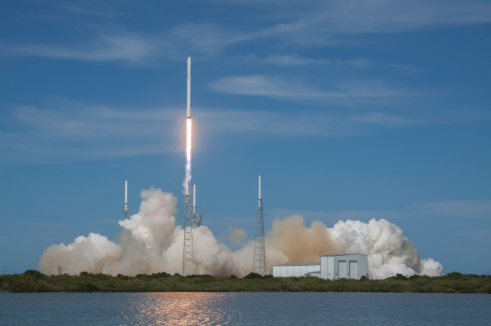[SatNews] After a one-day delay due to weather, a
SpaceX Falcon 9 rocket successfully launched a Dragon cargo spacecraft on a mission to deliver cargo to the International Space Station. The Falcon 9 lifted off from Cape Canaveral Air Force Station, Florida, at 4:10 p.m. local time.

On Tuesday, April 14, 2015, SpaceX’s Falcon 9 rocket and Dragon spacecraft lifted off from Launch Complex 40 at Cape Canaveral Air Force Station in Florida, beginning SpaceX’s sixth official mission to resupply the space station for NASA. The launch occurred at 4:10pm EDT and while weather had remained a concern during the countdown, Falcon 9 executed a picture-perfect liftoff into a nearly cloudless sky.
Weather, which postponed a launch attempt the previous day, was not a factor for the launch, and the Falcon’s second stage delivered the Dragon spacecraft into orbit 10 minutes after liftoff. However, the rocket’s first stage failed to survive a hard landing on a ship, excess lateral velocity caused it to tip over post landing
p>It’s SpaceX’s sixth successful launch, but the company started by Elon Musk wants to land the rocket back on a platform at sea. If successful, the rocket recovery could mean significant cost savings for SpaceX. Musk described Tuesday’s landing “too hard for survival.”
The Dragon spacecraft is carrying 2,015 kilograms of cargo for the ISS, including experiments, crew supplies, and other equipment, on SpaceX’s sixth mission under its Commercial Resupply Services contract with NASA. Dragon will later return about 1,370 kilograms of science investigations and other items.
Much of the attention about the launch was focused, though, on SpaceX’s plans to attempt to land the first stage on the company’s “autonomous spaceport drone ship” in the Atlantic Ocean, part of the company’s efforts to make the first stage reusable.